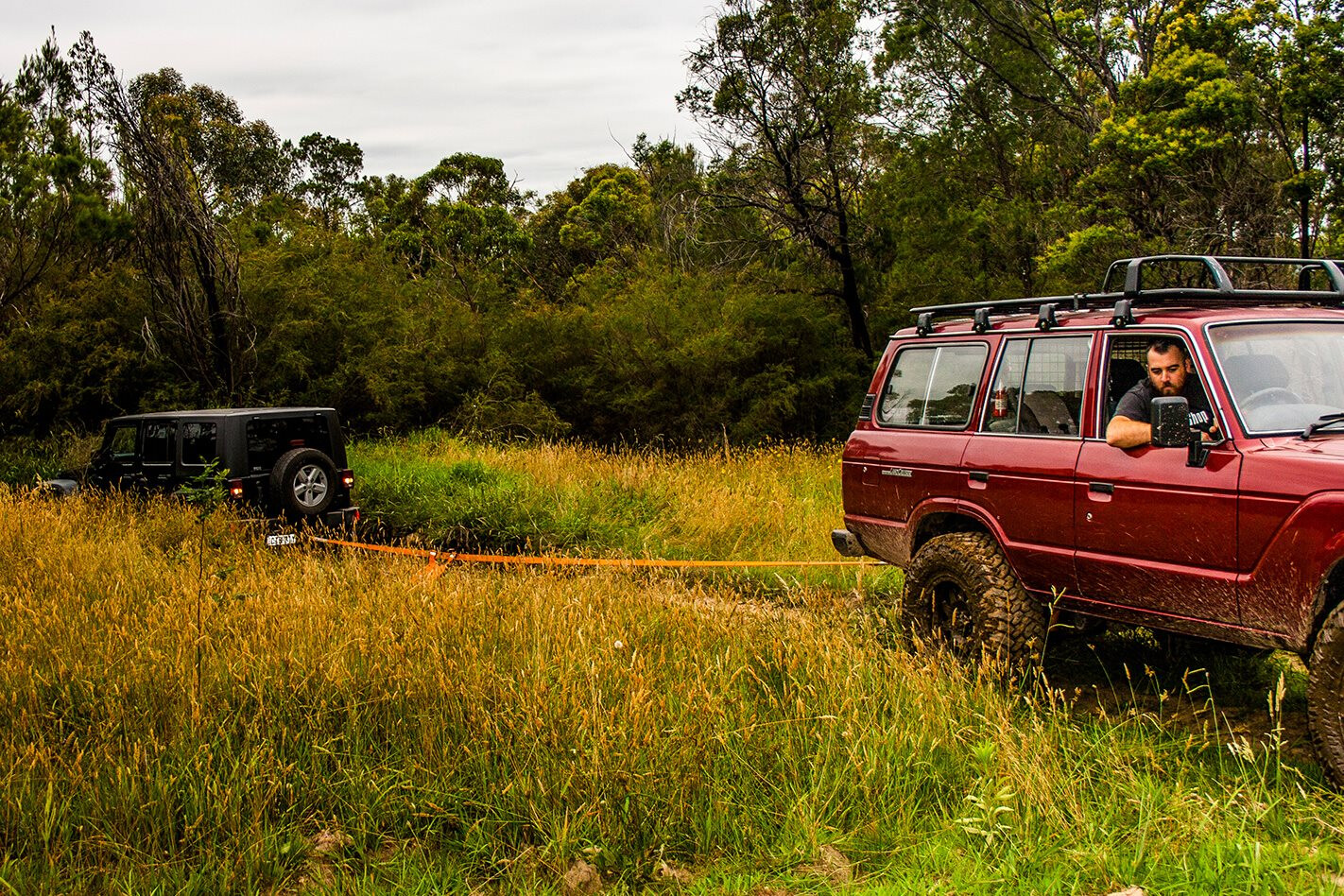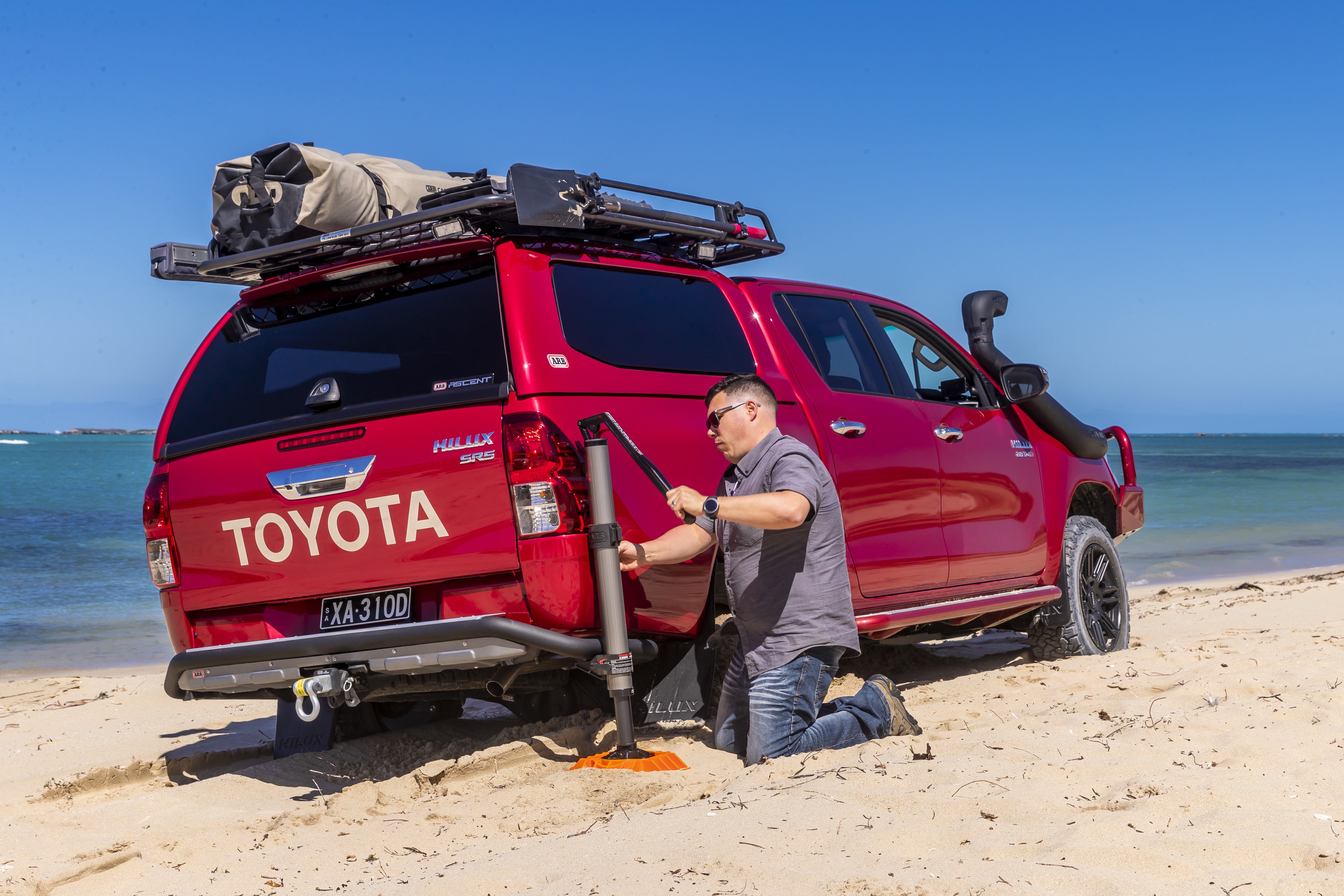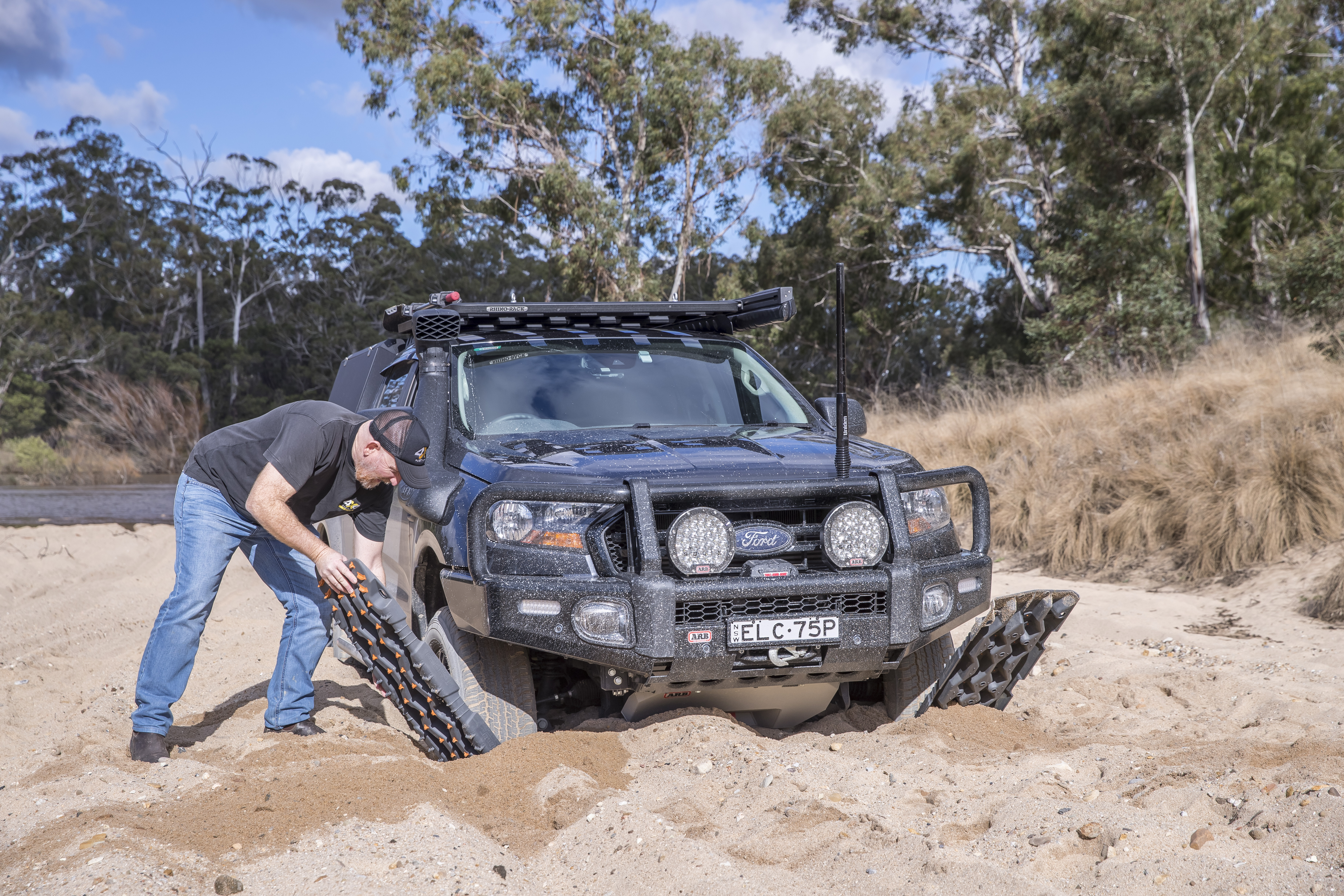Whether you’ve been off-roading for the past 20 years or you’re just about to use your four-wheel drive’s first tank of fuel, a snatch recovery is an invaluable technique.
It’s quick, easy and requires a minimal amount of gear. But snatch recoveries have their downsides: they’re tough on vehicles, tough on gear and potentially fatal if something gives way. So they should always be taken on with a clear head and solid plan.
In this edition of 4X4 Australia, we’re running you through the technique behind a typical snatch recovery. It’s a handy guide for new players, but it can also be a useful reminder for more experienced off-roaders.
THE SNATCH RECOVERY STEP BY STEP
1. IDENTIFY THE PROBLEM Many things can cause a 4×4 to stop dead in its tracks, and the problem should determine the response. In the situation pictured on p162, forward momentum was halted by a lack of traction, with the Jeep’s road tyres simply spinning in slick mud. With a curve in the track ahead, a rear recovery is in order. A different plan would be needed if there were a step or ledge behind the tyres.
2. CHECK THE GEAR Before we can begin setting up for a recovery, it’s vital to ensure all gear is in safe working condition. A frayed or damaged snatch strap can greatly reduce its safe working load, leading to premature failure, vehicle damage and a Wrangler that’s still stuck in the mud. Pay careful attention to the stitching at either end; the ends normally fail first.
3. ATTACH THE STRAP With the snatch strap passing visual inspection, it’s time to attach it to the bogged vehicle. In a pinch, the towing pin of a receiver-style towbar can work as shown here, although a hitch receiver will offer a stronger alternative, helping prevent the pin from bending, and allowing broader recovery options in the process.
4. ROLL THE STRAP OUT With one end securely attached to the bogged 4×4, roll the strap out in the direction you intend to perform the recovery. As you roll the strap out, every effort should be made to keep it clean and dry. Mud, water, knots and twists can all severely lower the strap’s safe working load.
5. LEAVE SOME SLACK A snatch recovery works by transferring built-up energy from the free vehicle to the stranded one via the elasticised strap. For this reason, you need a run up – of sorts. Leave at least 2-3m of slack in the strap when rolling it out, to ensure you’re able to gain enough momentum before the slack is taken up. The strap should be laid in a way that won’t tangle or knot it when you pull on it.
6. CONNECT THE OTHER END With 2-3m of slack left, you’ll be able to position the free vehicle and connect it. In this instance we’re using a rated recovery hitch with a rated bow shackle. In no circumstance are tow-balls, tongues or tie-down points to be used – these are all designed for a gradual application of vehicle weight and may not withstand the shock loading of a snatch recovery potentially creating a dangerous situation.
7. FIT AN AIR BRAKE Often overlooked, an air brake is a vital piece of the puzzle for any snatch recovery. In a perfect world with perfect equipment, air brakes might not be necessary, but in reality, things often go wrong. Failed straps, recovery points or mounting bolts may result in metal objects hurtling towards a window with a couple of tonnes of energy behind them. An air brake can direct those objects to earth and absorb some of the energy in the process.
8. ENSURE PLENTY OF ROOM With the recovery equipment fitted, it’s time to ensure there is adequate room in the run-off area. If the stuck 4×4 comes out more easily than anticipated, you’ll need a fair distance for run-off. To avoid potentially twisting either vehicle’s chassis, it’s vital to perform the recovery in a direction that is as straight as possible; ideally, less than 10 degrees.
9. KEEP PEOPLE WELL CLEAR In the event of something going pear-shaped in the midst of a recovery, it’s vital to keep bystanders to a minimum. Both vehicles should have a driver, but everyone else should be off to the sides – at least 1.5 times the length of the strap away from the vehicles. There is no reason for anyone else to be closer to the vehicles.
10. COMMUNICATION In a snatch recovery, communication is vital. If you’re using hand signals, a UHF, or even shouting to each other, both parties should know exactly what’s going to happen, what to expect and when to act. A count down via UHF is often the clearest way to direct the recovery effort.
11. READY THE BOGGED VEHICLE The bogged vehicle should be in low range and the lowest gear possible to provide maximum torque and control. If heading forwards, this will be first gear, although in our situation reverse was required. A vehicle’s driveline is weakest in reverse, with potential for damaged diff gears or shattered uni or CV joints, so moderation is important. Go as fast as you need but as slow as you can.
12. READY THE FREE VEHICLE With the bogged vehicle ready to go, the driver of the free vehicle should select low-range second gear to provide torque and control but also to allow appropriate speed. Before commencing, the driver should be aware of the path they’re driving and what could happen if the vehicle kicks out sideways when slack is taken up or a strap breaks.
13. PERFORM THE RECOVERY With both drivers ready and bystanders out of the way, the signal to go should be given by the driver of the bogged vehicle. With the free vehicle accelerating to no more than 10km/h, the driver of the bogged vehicle should accelerate as soon as they feel the tug of the strap. This is to break suction in mud. Too late can lead to a failed attempt while too early can cause the bogged vehicle to be sucked deeper.
14. ASSESS FOR ANOTHER ATTEMPT If on the first attempt the vehicle isn’t freed, stop and assess the situation. The solution may be as simple as dropping tyre pressures or having a second attempt. But it could be more involved. Is there a previously unseen ledge or branch trapping the bogged vehicle? Repeated attempts at increasing speeds may free the vehicle but can also cause catastrophic damage.
15. INSPECT THE GEAR With the bogged vehicle back on solid ground and stationary, disconnect the recovery equipment and perform another visual inspection before packing it away. Torn fibres or busted stitches are a death sentence for any strap. Straps should always be thoroughly cleaned in hot soapy water after use. Engrained sand or mud can cause internal damage.
FIVE THINGS EVERYONE GETS WRONG
- No air brake (damper)
- Twist in the strap, reducing safe working load
- Using straps past their lifespan
- Too much speed
- Too many repeated attempts
- Part 1 of our 4×4 recovery guide: the basics
- Part 2 of our 4×4 recovery guide: recovery kits





